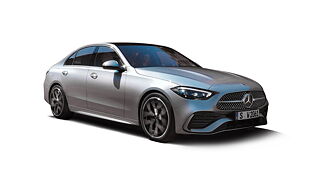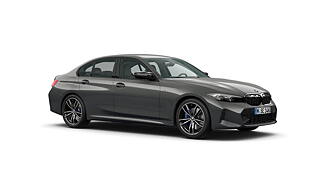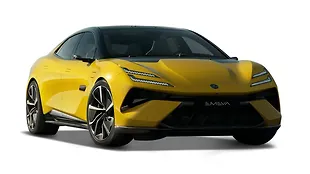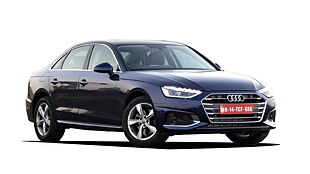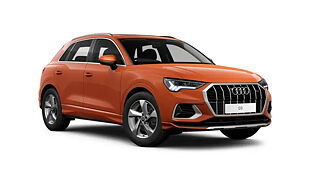The Indian car luxury market is expanding as fast and wide as the wallets of its buyers. We believe that the segment will only grow in the light of India inching towards becoming a global power and financial hub. Wanting to get a perspective of what we can expect in the future, we approached Mr Joe King, the head of Audi India, to give us a little insight. He gladly agreed to be a guest writer and provide us with his views on the subject.
The growth of the Indian luxury car market is more than mere market dynamics in the car segment. It is a reflection of the changing taste, ambition and lifestyle of the Indian consumer, who empowered by globalisation and an increase in the per capita income, is not hesitant to splurge on luxury products, services or automobiles ranging from Saloons, SUVs or entry level sedans.
In 2013, the Indian luxury car market had sales of approximately 32,000 units and it is expected to grow in the current calendar year. We have seen the launch of a plethora of luxury car brand models. This was unheard of in the Indian car market even five years ago! According to IHS, the Indian luxury car market is in its nascent stage and is forecasted to climb by 168% by 2018.
The premium entry level market in India:
The average age of an Indian luxury car buyer has come down to 35-40 years from the earlier average of 50 years. An increasing number of young entrepreneurs and professionals from various fields are buying luxury cars and this affluent segment has been boosting sales volumes. With the consumer profile reshaping and expanding, the luxury car market in the country is also getting redefined. No surprises then, that, luxury car makers have introduced entry level cars in the Indian market to woo the young and first time buyers.
A survey taken up by major car companies revealed that buyers with a budget of Rs. 15-30 lakhs are more inclined to buy an entry-level luxury sedan than a premium model of a passenger car manufacturer. Audi India’s understanding is that the Indian customer is a value-sensitive customer and not a price-sensitive one. Our growing number of younger customers proves that if an Indian buyer sees value by way of product offering features, performance, etc, s/he is willing to pay a higher price for the same.
In August this year, Audi India launched the next big Audi- the Audi A3, first compact luxury sedan in India with a price tag of INR 22, 95,000 /- ex-showroom Delhi. The first batch of Audi A3 was booked within days of its launch, a development that has enabled Audi India to register double digit growth rate in volumes this year and make it another record year. The Audi A3 is expected to contribute as much as 15% to Audi’s volumes and expect the second half to provide healthy volumes. This positive sales trend of Audi A3 reflects that the Indian customer is looking for an entry level sedan but with no compromise on luxury.
Factors for growth of entry level luxury car segment in India:
The rising popularity of this segment in the Indian luxury car market is attributed to the rise of young entrepreneurs and professionals in the age group of 30-40 years. Most of these individuals hail from premium business schools as well as from foreign universities and are well travelled. Their love for luxury and high aspirations is a factor for them to own a luxury car. They want to make a style statement at a relatively affordable price. It is also an affirmation and celebration of their achievements so early in life.
Today, the people who buy an Audi are not only industrialists, but the sons of industrialists. We have a young and a young at heart portfolio of buyers, who are largely self-drivers and the entry level luxury sedans are creating their own market involving self driving younger customers. In fact according to a Kotak-Crisil Survey some time ago, Audi has quickly become popular amongst the younger ultra HNIs.
Another trend or change in customer expectation for entry level luxury sedan is the growing demand for luxury cars in Tier-II & Tier-III cities in India. Having the option of an entry-level segment in the luxury car space is a boost for the first time buyers. The new pockets of regional growth have also expanded due to the boom in the ecommerce segment. This has really helped the sale of luxury vehicles in the small cities and towns.
As we are progressing in the new millennium, luxury small cars are becoming more appealing with consumers looking for practical yet luxury mobility. Working professionals migrating from small towns to metros, the increasing number of nuclear families and the concept of auto loans have provided a boost to the sale of these cars. In fact, for some customers these luxury sedans are also becoming popular as the family’s first car.
Across the globe:
Compact entry-level cars in the luxury segment are popular world over. According to IHS, sales in the premium compact car segment have trebled to more than 52,000 in the last four years in China. Demand for smaller SUVs and affordable entry-level luxury cars like Audi A3 is high in the Chinese automobile market.
Global sales for the Audi A3 family propelled by the launch of the A3 sedan in US, saw a boost of 49% to around 1, 44,750 units since January to June 2014.
Conclusion:
As the economy swings upward and the young buyers segment continues to grow with their high living standard, the entry-level luxury segment will continue to grow in India. Luxury car makers have understood the needs of this emerging community and are providing lucrative options to this diaspora of these new customers who are willing to stretch their budget just a little bit more to match their aspirations.

![Audi A3 [2014-2017] Image Audi A3 [2014-2017] Image](https://imgd.aeplcdn.com/272x153/cw/cars/audi/a3.jpg?q=80)
![Audi A3 [2014-2017] Right Front Three Quarter Audi A3 [2014-2017] Right Front Three Quarter](https://imgd.aeplcdn.com/199x112/ec/34/11/13533/img/m/Audi-A3-Right-Front-Three-Quarter-48942_ol.jpg?v=201711021421&q=80)
![Audi A3 [2014-2017] Rear View Audi A3 [2014-2017] Rear View](https://imgd.aeplcdn.com/199x112/ec/34/11/13533/img/orig/Audi-A3-Sedan-Rear-view-28028.jpg?v=201711021421&q=80)
![Audi A3 [2014-2017] Left Side View Audi A3 [2014-2017] Left Side View](https://imgd.aeplcdn.com/199x112/ec/34/11/13533/img/orig/Audi-A3-Sedan-Left-Side-View-28026.jpg?v=201711021421&q=80)
![Audi A3 [2014-2017] Interior Audi A3 [2014-2017] Interior](https://imgd.aeplcdn.com/199x112/ec/34/11/13533/img/orig/Audi-A3-Sedan-Interior-28027.jpg?v=201711021421&q=80)
![Audi A3 [2014-2017] Steering Wheel Audi A3 [2014-2017] Steering Wheel](https://imgd.aeplcdn.com/468x263/ec/b1/FB/13840/img/orig/Audi-A3-sedan-29222.jpg?v=201711021421&q=80)






